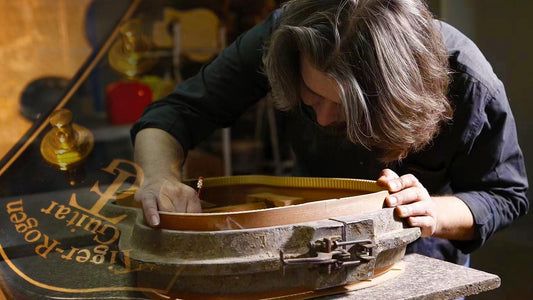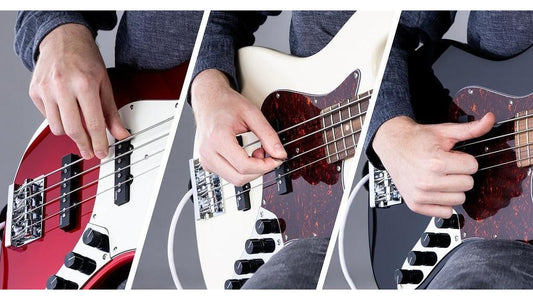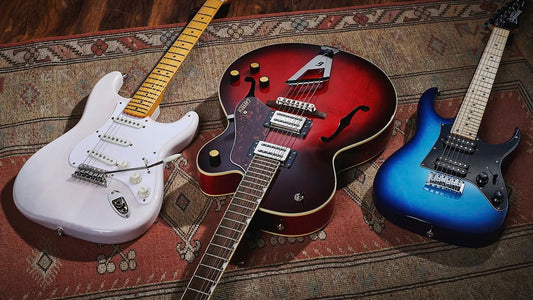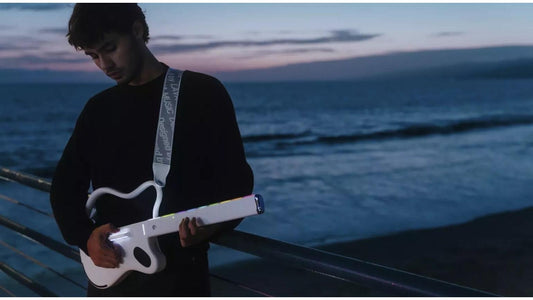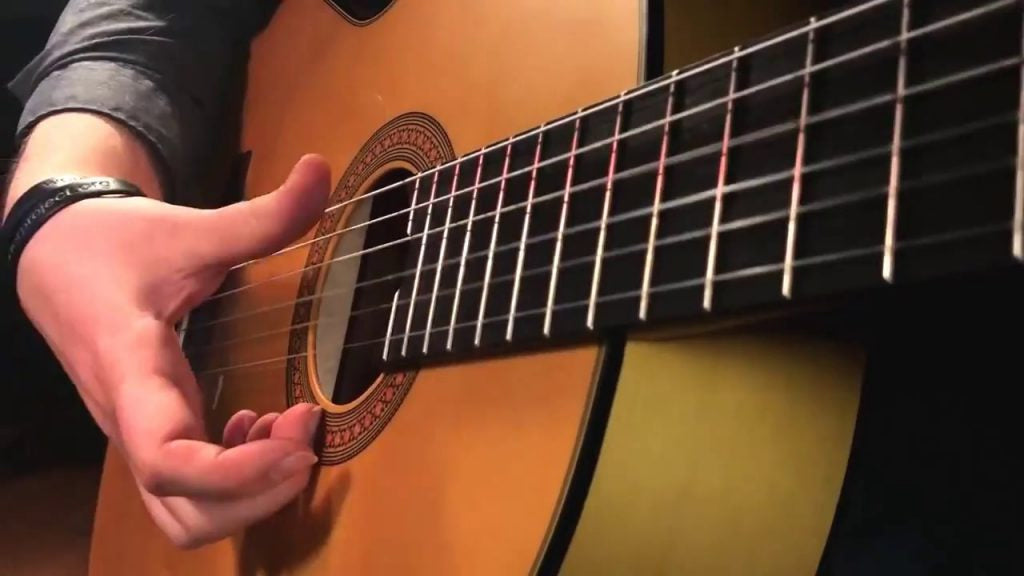
Cấu Trúc Khác Nhau Giữa Guitar Flamenco Và Guitar Classic Cổ Điển
Có thể nhận thấy rõ được sự khác biệt về âm thanh của đàn guitar flamenco và guitar classic cổ điển, nhưng thật khó để có thể nhận ra sự khác biệt về cấu tạo giữa 2 loại đàn này.
Chúng không phải là những nhạc cụ khác nhau hoàn toàn như violin và viola, ngược lại, chúng có sự liên quan chặt chẽ với nhau. Dẫu vậy, guitar flamenco và guitar cổ điển có sự khác nhau đáng kể về kích thước, cao độ và chất lượng âm thanh. Một số người đã so sánh sự khác biệt giữa violin và fiddle, cho rằng fiddle là 1 loại violin (đôi khi được tu sửa) được sử dụng để chơi nhạc dân gian.
Tuy nhiên, guitar flamenco không phải là một phái sinh của guitar cổ điển. Trên thực tế, lịch sử cho thấy rằng nghệ nhân sản xuất guitar người Tây Ban Nha Antonio Torres (1817-1892) - người đã tiêu chuẩn hóa kích thước và hình thức của guitar hiện đại - cho rằng chúng là 1 loại.
Nghệ nhân người Mỹ Ervin Somogyi cho rằng có sự khác biệt: “Mặc dù những nhạc cụ này được chơi trong các thể loại nhạc khác nhau, các nhà sản xuất hoặc thậm chí hầu hết các nhạc sĩ đều tin rằng không có minh chứng cụ thể cho sự khác biệt rạch ròi giữa guitar flamenco và guitar cổ điển. Những nét khác nhau của 2 loại đàn này chỉ mới xuất hiện vào những năm 1950.”
Dù cây vĩ cầm-fiddle không được coi là 1 nhạc cụ hoàn hảo, nhưng nó vẫn ngầm thể hiện sự phân chia văn hóa. Paco de Lucía đã từng mô tả mối quan hệ giữa hai phe theo cách này: “Hiển nhiên chúng ta phải hài lòng với sản phẩm từ công sức của bản thân. Nhựa sống đam mê của tôi chảy trong từng bản nhạc. Tôi đã luôn nuôi dưỡng niềm đam mê đó, Camarón cũng vậy. Tôi không biết điều gì đã thúc đẩy điều đó ở anh ấy nhưng tôi biết rằng cây đàn đã luôn ở bên tôi từ thời thơ ấu trong thế giới flamenco, và thậm chí còn nhiều hơn thế nữa ... đặc biệt là trong thế giới guitar cổ điển nơi các nghệ sĩ guitar flamenco bị đối xử khinh bỉ tuyệt đối. Tôi đã luôn khao khát chứng tỏ bản thân. Đó là động lực thúc đẩy tôi chơi với tốc độ này. Và vận tốc đó là một cách để chiến đấu chống lại sự bất an và sợ hãi.
ACTION GUITAR FLAMENCO THẤP HƠN
Một cây đàn guitar flamenco có action thấp và độ căng dây cao hơn có thể giúp tạo ra các âm đặc trưng của flamenco. Dây E bass có thể cực kỳ thấp chỉ 1,6 mm (1/16 ″) ở phím 12 so với một cây đàn guitar cổ điển vào khoảng 3,2 mm (1/8 ″).
Action dây E quấn được đo ở phím thứ 12 có thể thấp tới 1,6 mm (1/16 ″) trên một cây guitar flamenco. Trong khi đó, action của một cây đàn guitar cổ điển có thể gấp đôi con số đó, ở mức 3,2 mm (1/8 ″). Một action thấp như vậy có thể gây ra hậu quả cho loại dây đàn guitar flamenco.
Tại sao lại có action thấp như vậy? Bởi điều này giúp các nghệ sĩ chơi trong thời gian lâu hơn, và dễ dàng thực hiện các kỹ thuật tay trái khó khăn như slurs mở rộng (hammer-on và pull-off) hơn. Action thấp có thể giúp tạo ra âm thanh đặc trưng của flamenco khi các dây low-set chạm vào phím đàn. Tuy vậy điều này cũng có mặt trái: action thấp có thể làm giảm âm lượng của cây đàn guitar vì dây có ít chỗ để rung hơn và truyền tải năng lượng qua soundboard.
Đây là những đánh đổi mà mỗi nghệ sĩ guitar phải trải qua, và quyết định cuối cùng phụ thuộc vào sở thích cá nhân của họ. Mài bớt hoặc thay thế đai ốc hoặc ngựa có thể làm giảm action, mặc dù các loại guitar khác nhau có giới hạn tự nhiên của riêng chúng.
Theo nghệ nhân Richard Bruné, có một số bằng chứng cho thấy những cây đàn guitar thời kỳ đầu có action thấp, dần dà thường được biết đến là những cây đàn guitar flamenco. Ông đã kiểm tra một cây đàn guitar cổ điển của Jose Ramirez I (1858-1923) năm 1904 với action nhỏ hơn 1,6 mm (1/16 ″) ở phím số 12. Kết quả cho thấy rằng các nghệ sĩ guitar cổ điển bắt đầu chuộng action cao hơn sau Thế chiến thứ hai.
GUITAR FLAMENCO CÓ GOLPEADORE BẢO VỆ SOUNDBOARD
Một kỹ thuật đặc trưng của guitar flamenco là golpe - gõ ngón tay phải bằng phần thịt hoặc móng tay lên soundboard (mặt thùng đàn). Hành động này có thể sẽ làm hư hại soundboard nếu không được bảo vệ, đó là lý do tại sao guitar flamenco có golpeadore được dán vào mặt đàn.
Những cây đàn trước đây thường có golpeadore bằng nhựa trong. Ngày nay, chúng được làm bằng nhựa mỏng hơn, trong suốt.
BỘ KHÓA PEGHEAD
Bộ khoá peghead bằng gỗ Rosewood hoặc gỗ Mun được coi là tiêu chuẩn cho đến khi Antonio Torres phát minh ra bộ khoá có hộp số. Ban đầu chúng đắt hơn nhiều so với bộ khoá cố định. Việc lựa chọn bộ chỉnh không ảnh hưởng đến âm thanh của cây đàn. Rất ít cây đàn, như cây dưới đây, hiện được chế tạo với bộ khoá peghead truyền thống.
CÁC SỬ DỤNG GỖ KHÁC NHAU GIỮA GUITAR FLAMENCO VÀ CỔ ĐIỂN
Đàn guitar Flamenco truyền thống có xu hướng được làm từ các loại gỗ nhẹ như gỗ Bách. Đàn guitar cổ điển có xu hướng được làm từ các loại gỗ sẫm màu như gỗ Cẩm Lai. Các loại gỗ khác nhau cho các đặc tính âm học khác nhau: gỗ Bách tạo ra âm thanh sắc nét hơn trong khi gỗ Cẩm Lai tạo ra độ bền và màu mè hơn.
Tuy nhiên, có nhiều yếu tố ảnh hưởng đến âm thanh của đàn guitar. Nhiều nghệ sĩ guitar cổ điển và flamenco trong suốt lịch sử đã chơi cả hai loại guitar tùy thuộc vào mong muốn của họ.
Một số học giả theo dõi sự khác biệt giữa flamenco và guitar cổ điển đối với Andrés Segovia (1893-1987), người đã tăng tính cổ điển bằng một tay trong khi đẩy flamenco bằng tay kia.
Segovia chơi nhạc flamenco và ông đã chơi cây đàn ghita blond 1912 Manuel Ramirez / Santos Hernandez cho tới năm 1937. Sau khi xúc phạm Santos Hernandez, nghệ sĩ chơi đàn hàng đầu Tây Ban Nha thời bấy giờ, ông buộc phải ra nước ngoài tìm một cây đàn khác. Ông tìm đến thợ làm đàn người Đức Hermann Hauser, người sau đó đã làm cho ông một cây đàn guitar bằng gỗ hồng đào theo mô hình cây đàn Torres.
Khi mức độ nổi tiếng của Segovia tăng cao, nhạc cụ bằng gỗ Hồng Đào đã trở thành biểu tượng của guitar cổ điển.
ĐỘ NẶNG VÀ ĐỘ SÂU CỦA FLAMENCO VÀ CLASSIC
Guitar Flamenco được cho là có trọng lượng nhẹ hơn guitar cổ điển.
Tuy nhiên, có một số bằng chứng lịch sử cho thấy guitar cổ điển và guitar flamenco đều nhẹ.
Gỗ trong các cây đàn của Torres (dù sáng hay tối) chỉ dày từ 1,0 đến 1,2 mm - mỏng một nửa so với các cây đàn hiện đại vào khoảng 1,5 đến 3,0 mm. Theo Bruné, sơn bóng hiện đại sử dụng các kỹ thuật công nghiệp kỳ công và tốn thời gian hơn, ngoài ra, kỹ thuật đánh bóng bằng tay của Pháp cũng làm tăng thêm trọng lượng, theo Bruné.
Phần thân của một cây guitar flamenco cũng được cho là nông hơn khi nhìn từ bên cạnh (phần thân nông hơn cũng có thể làm giảm âm lượng tối đa của cây đàn).
Sự kết hợp của những yếu tố này (action, golpeadores, peghead tuners, gỗ, trọng lượng và độ sâu) đánh dấu sự khác biệt thực sự giữa guitar cổ điển và flamenco.
Xem thêm:
Đàn Guitar Cordoba F7 Flamenco
